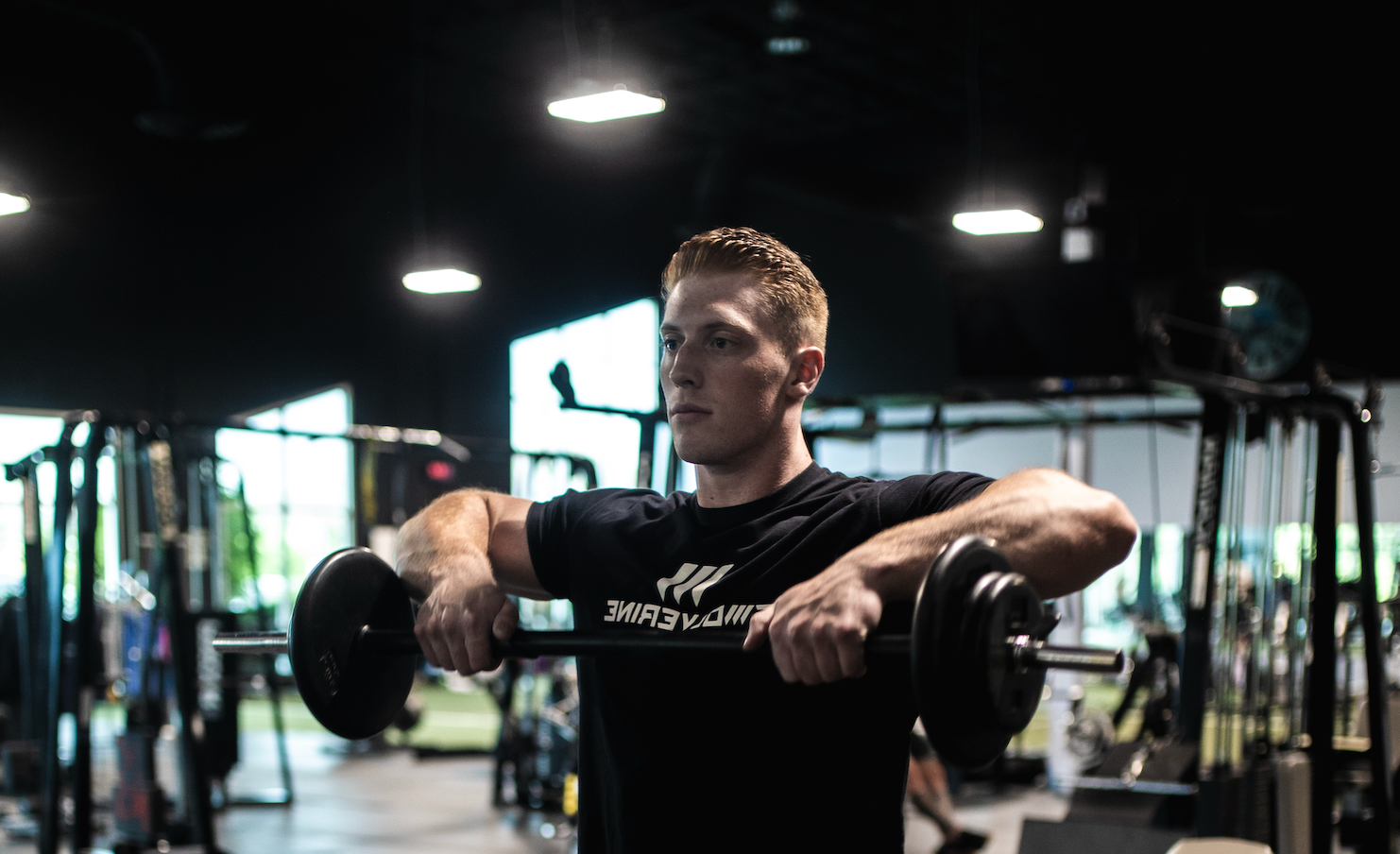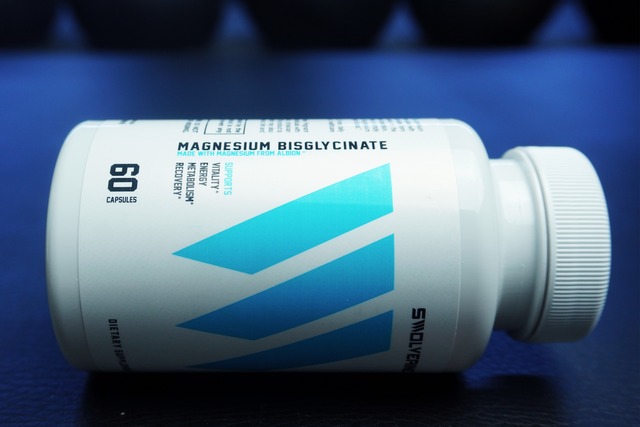In the relentless pursuit of muscle growth, bodybuilders are constantly on the lookout for cutting-edge tools to enhance their performance. One such breakthrough is the fascinating world of peptides—powerful building blocks that can supercharge your muscle development and recovery. But what exactly are these compounds, and how can they transform your bodybuilding journey? In this ultimate guide to peptides, we’ll delve into their unique properties, the science behind their effectiveness, and how they can help you unlock your full potential in the gym.
Whether you’re a seasoned pro or just starting out, understanding peptides may be the key to elevating your fitness goals. Get ready to explore the dynamic relationship between peptides and muscle growth, paving the way for enhanced strength, endurance, and recovery like never before. Your peak performance awaits!
What Are Peptides?
Peptides are short chains of amino acids—typically ranging from 2 to 50—that serve as the building blocks of proteins. They play a crucial role in various biological functions, acting as signaling molecules that influence processes such as hormone production, immune response, and tissue repair. Their smaller size compared to proteins allows for more efficient absorption in the body.
In the realm of bodybuilding and athletic performance, peptides are gaining attention for their ability to promote muscle growth, speed up recovery, and enhance overall performance (Harvard Health, 2020).
While the human body naturally produces peptides, modern biotechnology allows for the synthesis of specific peptides tailored for therapeutic or performance-enhancing use. These synthetic peptides can mimic or amplify the effects of naturally occurring peptides, offering targeted and potent physiological effects that support muscle growth and recovery.
Understanding how peptides function and their distinct roles can help athletes and bodybuilders unlock greater strength, endurance, and faster recovery. In the following sections, we’ll break down how peptides work, the most common types used in bodybuilding, and the performance-enhancing benefits they provide.
How Peptides Work to Enhance Muscle Growth
Peptides support muscle development primarily by stimulating growth hormone (GH) and insulin-like growth factor-1 (IGF-1). These two hormones play a central role in protein synthesis, muscle hypertrophy, and fat metabolism (Kraemer & Ratamess, Medicine & Science in Sports & Exercise, 2005).
Key Mechanisms of Action:
-
Growth Hormone-Releasing Peptides (GHRPs) and Growth Hormone-Releasing Hormones (GHRHs) signal the pituitary gland to release GH.
-
IGF-1 and its variant Mechano Growth Factor (MGF) stimulate muscle cell proliferation and regeneration.
-
Peptides increase blood flow and nutrient delivery, supporting muscle repair and growth.
-
Certain peptides reduce inflammation and soreness, accelerating recovery and allowing for more frequent training.
This multifaceted approach enables bodybuilders to train harder, recover faster, and gain muscle more efficiently.
Types of Peptides Used in Bodybuilding
A variety of peptides have distinct functions in muscle building, recovery, and performance. Below are the most commonly used peptides in bodybuilding:
Growth Hormone-Releasing Peptides (GHRPs)
Examples: GHRP-2, GHRP-6, Ipamorelin
These peptides bind to ghrelin receptors to stimulate GH release. Increased GH enhances anabolism, fat burning, and recovery (Walker et al., Frontiers in Endocrinology, 2019).
Growth Hormone-Releasing Hormones (GHRHs)
Examples: CJC-1295, Sermorelin
GHRHs are often paired with GHRPs for synergistic effects. CJC-1295 is particularly effective due to its extended half-life, delivering a sustained GH release that supports long-term muscle growth.
Insulin-like Growth Factor-1 (IGF-1)
Variants: IGF-1 LR3, DES IGF-1
IGF-1 is a downstream mediator of GH that directly stimulates muscle protein synthesis and enhances nutrient uptake in muscle cells. IGF-1 LR3 offers longer activity and greater muscle-building potential (Yakar et al., The Journal of Clinical Investigation, 2002).
Mechano Growth Factor (MGF)
MGF is a splice variant of IGF-1, released in response to resistance training. It activates satellite cells, aiding in the repair and regeneration of muscle fibers, making it crucial for muscle density and recovery.
BPC-157 (Body Protection Compound-157)
BPC-157 is known for its healing and anti-inflammatory properties. It supports tissue repair in muscles, tendons, and ligaments, which reduces downtime and enhances training consistency (Pevec et al., Journal of Physiology and Pharmacology, 2010).
Thymosin Beta-4 (TB-500)
TB-500 promotes angiogenesis (new blood vessel formation) and supports tissue regeneration. It enhances blood flow, oxygenation, and nutrient delivery to muscles, making it a valuable peptide for recovery and performance optimization.
Peptides represent a powerful tool in the arsenal of modern athletes and bodybuilders. When used responsibly and under proper guidance, they offer potential for significant improvements in muscle mass, recovery time, and performance.
Benefits of Using Peptides for Muscle Growth
Peptides offer a wide array of benefits for bodybuilders and athletes aiming to improve muscle growth, performance, and recovery. Below are some of the most impactful advantages of incorporating peptides into a training regimen.
Enhanced Muscle Growth and Strength
Peptides such as GHRPs, GHRHs, and IGF-1 significantly boost anabolic hormone levels, especially growth hormone and IGF-1, which stimulate muscle protein synthesis, increase strength, and promote both hypertrophy (growth of existing muscle fibers) and hyperplasia (formation of new fibers) (Yakar et al., The Journal of Clinical Investigation, 2002).
These effects make peptides a valuable tool for building lean muscle mass and breaking through strength plateaus.
Improved Recovery and Reduced Muscle Soreness
Peptides like BPC-157 and TB-500 have powerful regenerative properties. They help repair muscles, tendons, and ligaments, reduce inflammation, and accelerate tissue recovery. This leads to:
-
Shortened recovery windows
-
Less soreness post-workout
-
Increased training frequency and intensity
These healing peptides are especially beneficial for athletes recovering from injury or looking to prevent overuse damage (Pevec et al., Journal of Physiology and Pharmacology, 2010).
Enhanced Fat Loss
Certain peptides that stimulate growth hormone—such as GHRP-6 and Ipamorelin—also promote lipolysis (fat breakdown) and increase metabolic rate. This dual effect enables users to:
-
Build muscle while burning fat
-
Achieve a leaner, more defined physique
-
Improve body composition over time
This makes them popular for cutting phases and recomposition goals (Walker et al., Frontiers in Endocrinology, 2019).
Increased Endurance and Stamina
Peptides such as TB-500 and IGF-1 can improve oxygen delivery to working muscles and reduce exercise-induced fatigue, leading to:
-
Longer and more effective workouts
-
Better cardiovascular output
-
Improved training volume and progression
This benefit is especially advantageous for endurance athletes or those engaging in high-intensity training.
Enhanced Joint and Connective Tissue Health
Peptides like BPC-157 and TB-500 also support joint function and structural integrity by:
-
Reducing joint inflammation
-
Repairing damaged connective tissue
-
Improving mobility and stability
This helps athletes maintain long-term joint health and avoid injuries, particularly during heavy lifting or high-impact sports.
Potential Risks and Side Effects of Peptide Use
While peptides can offer impressive benefits, they are not without risk. Understanding these potential side effects is critical to safe and responsible use.
Hormonal Imbalance
Overuse of peptides that boost growth hormone can lead to hormonal disruptions, such as:
-
Acromegaly (abnormal bone and tissue growth)
-
Insulin resistance
-
Water retention and joint pain
To avoid these complications, peptides should always be used under medical supervision and within clinically recommended doses.
Injection Site Reactions
Because peptides are typically administered via subcutaneous or intramuscular injection, some users may experience:
-
Redness
-
Swelling
-
Bruising
-
Pain at the injection site
Rotating injection locations and following sterile technique can help reduce these reactions.
Potential for Abuse and Dependence
Due to their performance-enhancing effects, peptides are susceptible to misuse. Long-term or unsupervised use may lead to:
-
Dependency
-
Diminished natural hormone production
-
Psychological reliance
Education and professional guidance are key to preventing abuse and maintaining long-term health.
Allergic Reactions
Though rare, peptides can trigger allergic responses such as:
-
Itching or rashes
-
Hives
-
Breathing difficulties
Users should always monitor for allergic symptoms and consult a healthcare provider before starting peptide therapy.
Legal and Ethical Considerations
Many peptides are banned in professional sports by organizations like the World Anti-Doping Agency (WADA). Athletes should:
-
Verify the status of any peptide before use
-
Ensure compliance with sport-specific rules
-
Avoid penalties, suspensions, or disqualification
Staying informed and ethical is essential for anyone competing at an elite level.
How to Incorporate Peptides into Your Training Regimen
To get the most out of peptide use, a structured and evidence-based approach is essential.
Consultation with a Healthcare Professional
Always begin with a consultation from a qualified practitioner experienced in peptide therapy. They will:
-
Evaluate your goals
-
Review your health history
-
Recommend appropriate peptides and dosages
Self-prescription or online sourcing without medical oversight poses serious risks.
Selecting the Right Peptides
Choose peptides based on your desired outcomes:
-
Muscle Growth: IGF-1, CJC-1295 + Ipamorelin
-
Recovery & Healing: BPC-157, TB-500
-
Fat Loss & Definition: GHRP-6, Ipamorelin
Research or work with a coach familiar with peptide applications in sports performance.
Establishing a Dosage and Administration Schedule
Follow your provider’s recommendations for:
-
Dosage (mcg per day or week)
-
Timing (morning, pre/post-workout, or before bed)
-
Injection technique
Rotate injection sites to prevent tissue irritation or build-up.
Monitoring Progress and Adjusting Dosages
Track your response to peptides:
-
Muscle gains and fat loss
-
Recovery time and soreness
-
Performance output and endurance
Adjustments may be necessary to dial in your ideal response. Keep open communication with your healthcare provider.
Combining Peptides with a Comprehensive Training and Nutrition Plan
Peptides are not a shortcut—they amplify the results of a well-structured training program and balanced nutrition plan. Make sure to:
-
Hit your macronutrient targets
-
Prioritize rest and sleep
-
Stay consistent with your training
Peptides should complement—not replace—hard work, recovery, and discipline.
Absolutely! Here’s your SEO-formatted, Header 1 and Subheader 2 structured, and cleanly optimized version of the "Peptides vs Other Muscle Growth Supplements" section. All original information is kept intact, citations added where appropriate, and the tone remains informative and professional.
Comparing Peptides with Other Muscle Growth Supplements
Peptides are among the most promising tools for muscle growth and recovery, but they’re not the only option available to athletes and bodybuilders. Here’s a detailed comparison between peptides and other popular supplements used to build strength, improve recovery, and enhance performance.
Peptides vs. Protein Supplements
Protein powders such as whey, casein, and plant-based proteins supply the essential amino acids required for muscle protein synthesis. They provide the raw materials your body needs to repair and grow muscle tissue, especially after resistance training.
By contrast, peptides stimulate hormonal signals—particularly growth hormone and IGF-1—that create a more anabolic environment for muscle building.
➡️ Best Use: Combine both for synergistic benefits—use protein for immediate muscle recovery post-workout, and peptides to enhance long-term anabolic signaling.
📚 Source: Phillips et al., Journal of Applied Physiology, 2005
Peptides vs. Creatine
Creatine is one of the most researched supplements in sports nutrition, known for increasing ATP production—your body’s primary energy currency during high-intensity exercise. It supports:
-
Increased strength and power
-
Improved muscular endurance
-
Greater cellular hydration
Peptides, on the other hand, work through hormonal and regenerative pathways, enhancing muscle repair, satellite cell activation, and growth hormone secretion.
➡️ Best Use: Stack peptides with creatine to combine performance enhancement with accelerated recovery and growth.
📚 Source: Kreider et al., Journal of the International Society of Sports Nutrition, 2017
Peptides vs. Branched-Chain Amino Acids (BCAAs)
BCAAs (leucine, isoleucine, valine) directly influence muscle protein synthesis, reduce exercise-induced muscle breakdown, and improve endurance.
Peptides work more indirectly—by stimulating the endocrine system, they promote muscle growth, tissue repair, and recovery through pathways like GH and IGF-1 activation.
➡️ Best Use: Use BCAAs intra-workout to preserve muscle, and peptides in your long-term strategy for growth and recovery.
📚 Source: Shimomura et al., Journal of Nutrition, 2004
Peptides vs. Pre-Workout Supplements
Pre-workouts are designed for immediate effects: increased energy, improved focus, better blood flow, and performance during your workout. Common ingredients include:
-
Caffeine
-
Beta-alanine
-
Citrulline/Nitric oxide boosters
Peptides provide nootropic and recovery benefits, but not acute stimulation. Their effects build over time, enhancing hormonal balance, tissue regeneration, and muscle repair.
➡️ Best Use: Combine both to enhance workout intensity (pre-workout) and post-exercise adaptation (peptides).
📚 Source: Jagim et al., Journal of the International Society of Sports Nutrition, 2019
Peptides vs. Hormone Replacement Therapy (HRT)
Hormone Replacement Therapy (HRT)—such as testosterone replacement—directly introduces exogenous hormones into the body to address deficiencies, often used in aging populations or those with clinically low testosterone.
Peptides like CJC-1295, Ipamorelin, and Sermorelin instead stimulate the body’s natural hormone production, which may reduce the risk of:
-
Hormonal suppression
-
Dependency
-
Long-term endocrine disruption
➡️ Best Use: Peptides offer a more natural, regulated approach to hormonal support and may be preferable for those not eligible for full HRT.
📚 Source: Ho et al., New England Journal of Medicine, 1987
Conclusion: The Future of Peptides in Bodybuilding
Peptides represent a promising frontier in the world of bodybuilding, offering targeted and potent effects that can enhance muscle growth, recovery, and overall performance. As our understanding of these compounds continues to evolve, so too does their potential to revolutionize the way athletes train and compete.
The future of peptides in bodybuilding lies in ongoing research and development, with the potential for new and more effective peptides to emerge. Advances in biotechnology may lead to peptides with enhanced stability, bioavailability, and specificity, further optimizing their benefits and reducing risks. Additionally, the integration of personalized medicine and genetic profiling could enable tailored peptide therapies that align with an individual's unique physiological needs and fitness goals.
However, it is essential for athletes to approach peptide use with caution and responsibility, adhering to legal and ethical guidelines and prioritizing their health and well-being. Consulting with healthcare professionals, staying informed about regulatory changes, and using peptides as part of a comprehensive and balanced fitness strategy are crucial steps for maximizing benefits while minimizing risks.
In conclusion, peptides have the potential to unlock new levels of muscle growth and performance, paving the way for a new era in bodybuilding. As research progresses and our understanding deepens, these powerful compounds may become an integral part of achieving peak physical potential. By harnessing the power of peptides responsibly, bodybuilders can look forward to a future of enhanced strength, endurance, and recovery, pushing the boundaries of what is possible in the pursuit of excellence. Your peak performance awaits—embrace the power of peptides and unlock your full potential in the gym.
Find similar articles:
peptides






